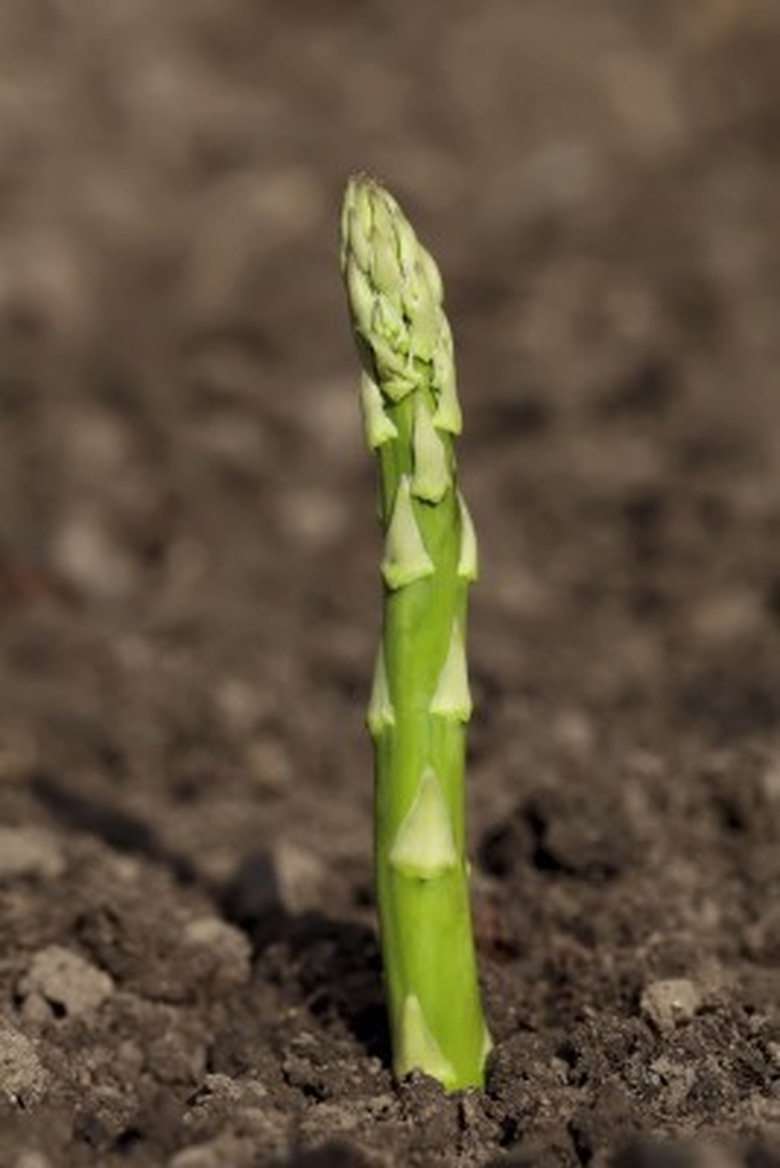How To Care For Asparagus
Asparagus is a perennial vegetable that grows through a combination of roots and rhizomes. Caring for asparagus requires understanding the needs of both its growing and its storage system. Asparagus shoots—the edible portion we think of as asparagus—are shoots from the rhizomes. Asparagus grows best in climates with warm days and cool nights. Established asparagus plants are productive for 10 to 15 years.
Caring for Asparagus
Step 1
Create a bed for your asparagus. Make sure the bed is in a location that can be permanent and is separate from other garden areas that will be tilled. Mature asparagus plants can grow as tall as five feet so it is also advisable to locate the bed in a place to minimize shading of other garden plants. Till the soil and remove any weeds or grasses. Apply a balanced fertilizer. It is essential that the asparagus bed be well-drained. Raising the bed and adding organic matter will help.
- Asparagus is a perennial vegetable that grows through a combination of roots and rhizomes.
- Mature asparagus plants can grow as tall as five feet so it is also advisable to locate the bed in a place to minimize shading of other garden plants.
Step 2
Plant the asparagus crown in late winter or early spring depending on your temperatures. Newly planted asparagus does not like really cold temperatures, so wait until the worst of winter has passed. Select one to two year old crowns with well-developed roots. Plant the crowns 8 to 10 inches deep and spaced about a foot and a half apart. The crowns should be placed on a slight mound in their hole with the roots spread out. Stagger the plants in their rows to increase the growing region for each plant.
Step 3
Water and fertilize the plants consistently during their first year. The plants should produce many feathery ferns in the summer of their first year. When winter is approaching and the growth yellows, cut the plant close to ground level. After the first year, remove the ferns during the growing season.
- Plant the asparagus crown in late winter or early spring depending on your temperatures.
- After the first year, remove the ferns during the growing season.
Step 4
Harvest asparagus beginning in its third year. Harvest spears in the spring when they are about 6 to 7 inches tall. Cut diagonally through the spear close to ground level. You can use a kitchen knife or a special asparagus knife. Fertilize the bed after production has ceased for the year. Keep the bed weed free to remove competition for nutrients and water. Once well established, your bed will continue to be productive for many years.
- Harvest asparagus beginning in its third year.
- Keep the bed weed free to remove competition for nutrients and water.
Tip
If an asparagus plant produces berries, that plant is a female. It will produce smaller sprouts, so you may want to remove it from the bed. According to the Ohio State Extension Office, you can avoid this problem by purchasing the new all-male hybrid asparagus varieties such as Jersey Giant, Jersey Prince, and Jersey Knight.
Warning
Poor growth may indicate that the soil is too wet or too acidic. Insects and wind may cause spears to be bent or misshapen. Deal with asparagus beetles using an approved insecticide. If your plants have spots, they may need to be treated with a fungicide.
